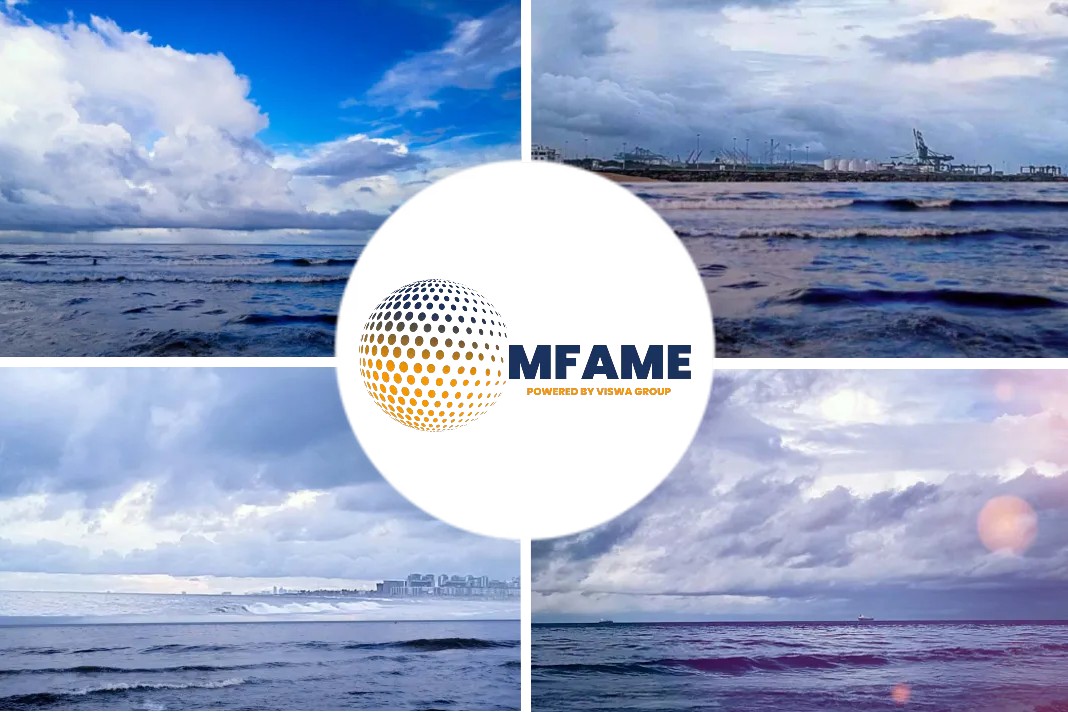- Satellite images show a silvery trail originating from a cargo ship that sank off western Sri Lanka in early June, raising fears of an oil spill.
- Authorities say the nearly 350 metric tons of fuel carried by the X-Press Pearl hasn’t leaked, but have activated contingency plans in the event of a spill.
- Experts say the consistency of the slick appears to rule out fuel oil, but say tests need to be carried out to confirm the source.
- A likely algal bloom has also sprung up around the wreck, attributed to the leak of the ship’s cargo of nitric acid, and operations are ongoing to clean up the tons of plastic beads that spilled from the ship and have washed up on shore.
A recent news article published in the Mongabay by Malaka Rodrigo states that slick caught on satellite image around sunken ship is not fuel oil.
What did the satellite images capture?
Satellite images have captured a silvery slick spreading on the surface of the sea from the burnt-out wreck of a cargo ship that sank off Colombo earlier this month, but authorities deny there’s been a much-feared fuel oil spill.
The images first appeared on June 4, two days after the Singapore-flagged X-Press Pearl sank following an onboard fire.
They showed a long, silvery trail originating from the ship and spreading several kilometers.
What does the analysis report says?
Analyzing a series of such images taken over subsequent days, the Marine Pollution Surveillance Program at the U.S. National Oceanic and Atmospheric Administration (NOAA) indicated it was possibly an oil slick generating from the sunken ship.
The slick was 2.74 nautical miles (5.07 kilometers) north of the ship, and images from June 12 indicated the slick was getting thicker, covering an area of 0.67 square kilometers (0.25 square miles).
Details of the cargo ship
The X-Press Pearl was carrying 297 metric tons of heavy fuel oil and 51 metric tons of marine fuel oil.
Environmental activists and experts have warned that a spill of this oil from the stricken ship would spark an unprecedented marine disaster for Sri Lanka.
But authorities say the slick in the images isn’t the ship’s fuel.
Details of initial inspections
Initial inspections confirmed the oil tanks were not damaged by the fire. Experts also note that heavy ship fuel oil is a thick, blackish, tar-like substance, whereas what was captured in the satellite images was grayish or silvery.
“While satellites imagery are useful tools in detecting spills, monitoring and assessing ongoing events, and planning countermeasures, it can sometimes bring false positives of spills such as those caused by algal blooms, so it is important to have closer inspection and water sample analysis,” Christopher Reddy, a senior scientist at the Woods Hole Oceanographic Institute, told Mongabay.
20 dead turtles washed ashore
Meanwhile, Sri Lankan media have reported that as many as 20 dead turtles have washed ashore in the week since the ship hitting the seabed.
Thushan Kapurusinghe, project leader of the Turtle Conservation Project of Sri Lanka, said it’s not unusual during the monsoon season for turtles to wash up dead, killed by rough seas and brought ashore by strong currents.
Meanwhile, the Center for Environmental Justice (CEJ), a Sri Lankan NGO, has petitioned the Supreme Court to seek full damages for the disaster.
Did you subscribe to our daily newsletter?
It’s Free! Click here to Subscribe!
Source: Mongabay

























